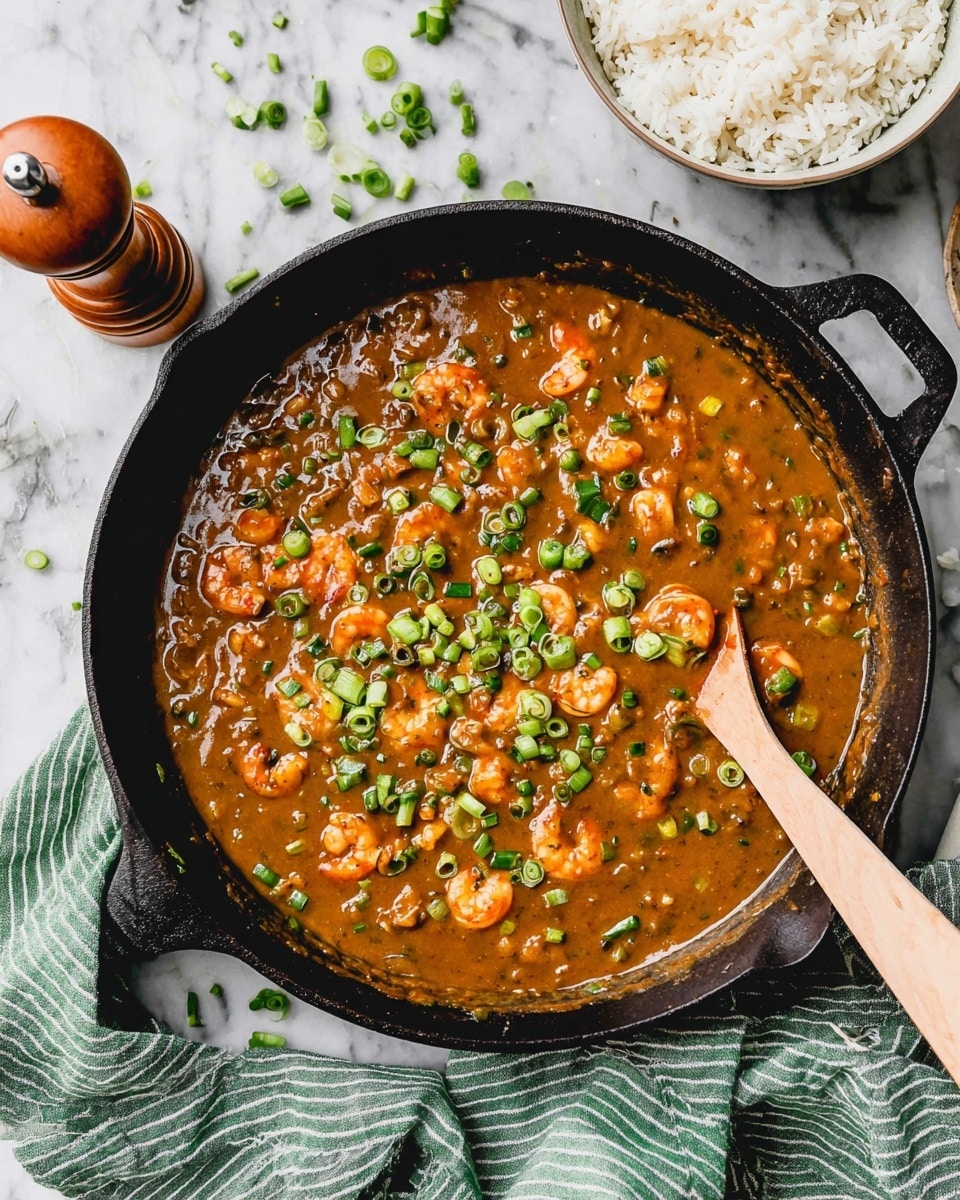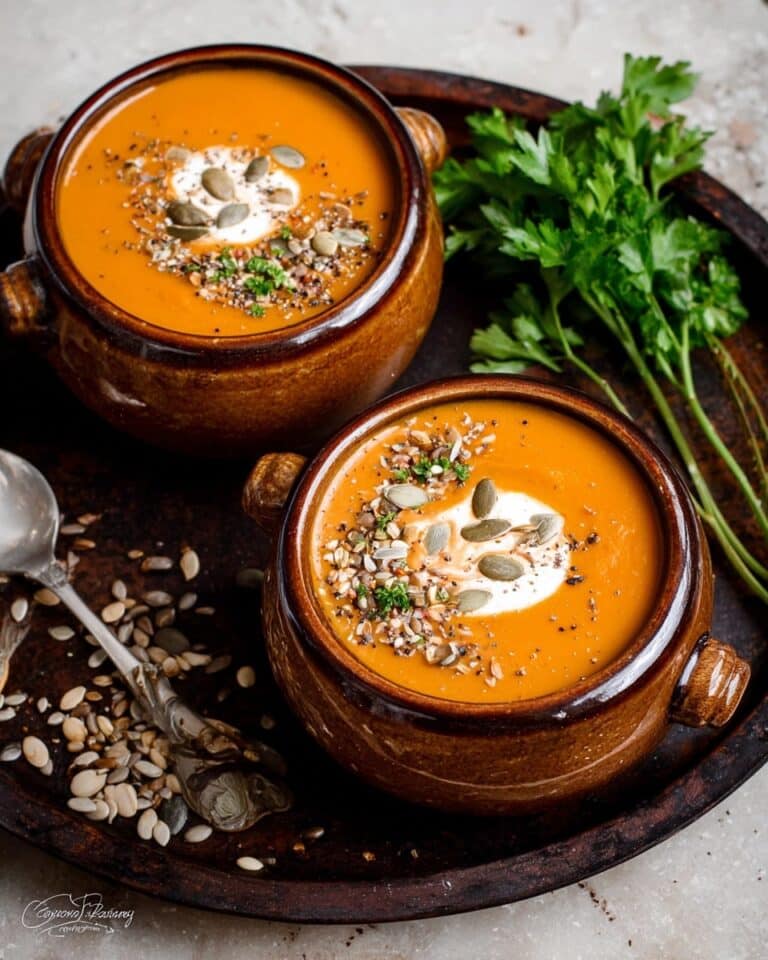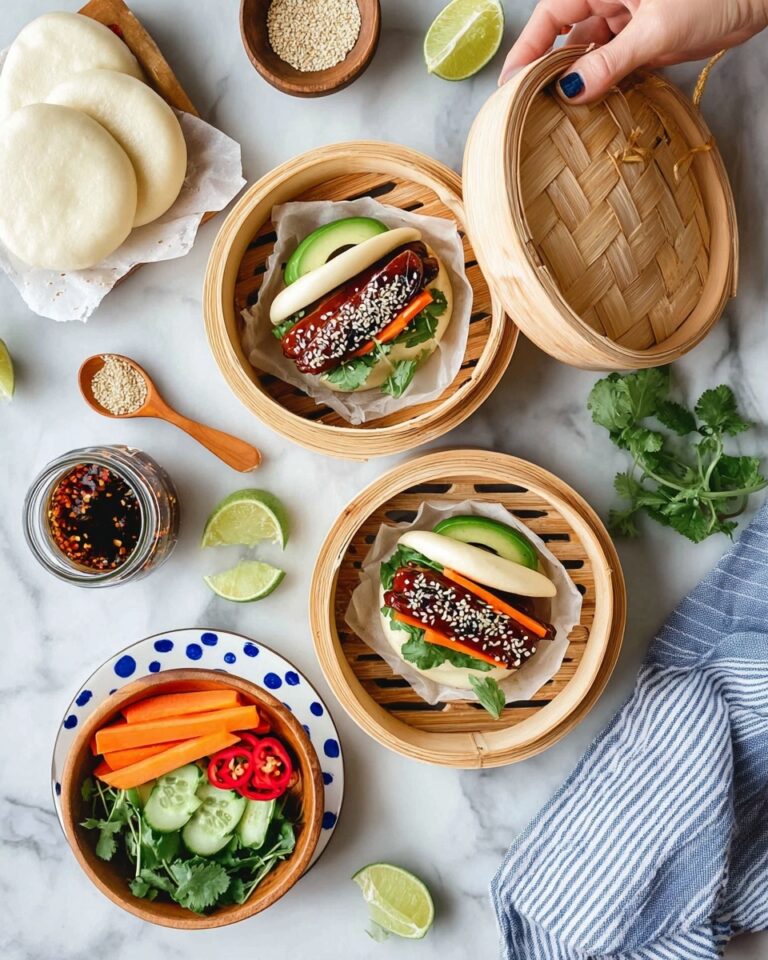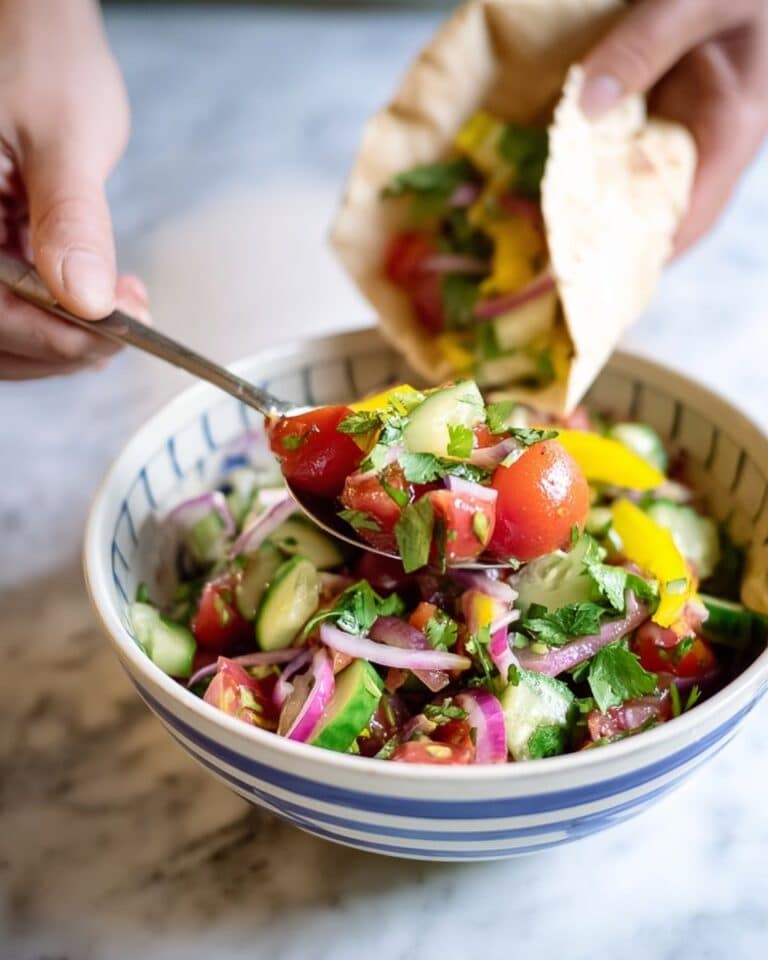If you’ve been craving a rich, comforting taste of Louisiana right at home, then you’re in for a treat with my Crawfish Étouffée Recipe. This dish is all about bold flavors simmering together in a luscious, creamy sauce that just hugs every bite of tender crawfish. Trust me, once you try this, it’ll quickly become one of your go-to recipes for cozy dinners that impress without the fuss. Stick around because I’m about to share everything you need to nail it perfectly.
Why You’ll Love This Recipe
- Authentic Louisiana Flavor: I’ve captured the classic “holy trinity” and spices that make étouffée truly special.
- Simple Yet Impressive: Despite its gourmet feel, this recipe is straightforward enough for weeknight cooking.
- Perfectly Balanced Thickness: The peanut butter-colored roux is the secret to that velvety gravy consistency.
- Family Favorite: Everyone I’ve served this to has gone crazy for it – it’s a crowd-pleaser every time.
Ingredients You’ll Need
One thing I’ve learned making Crawfish Étouffée is how essential the ingredients are to the final flavor — fresh veggies, good butter, and quality crawfish all play a starring role. Here’s why the components I use really work together.
- Yellow onion: Provides sweetness and depth; make sure it’s diced evenly so it cooks just right.
- Green bell pepper: Adds that fresh, slightly bitter balance that complements the richness perfectly.
- Celery ribs: Classic in Cajun cooking — brings a subtle crunch and enhances the base flavor.
- Garlic cloves: Fresh minced garlic packs a punch and keeps the dish aromatic.
- Butter: I divide it between sautéing and making the roux; don’t skimp here, it’s key for richness.
- All-purpose flour: This is the base for the roux, which thickens and flavors the sauce.
- Seafood stock: Gives a deep umami base; if you can find homemade or high-quality store-bought, even better.
- Better than bouillon lobster base: Just a touch intensifies the seafood essence without overpowering.
- Cajun seasoning: Sprinkles of this bring the classic Louisiana spices into the mix.
- Kosher salt and black pepper: For balanced seasoning — always taste before adding more.
- Dried thyme: Adds an earthy herbal note that melds with the spices nicely.
- Cayenne pepper: Don’t be shy here, a little heat wakes up the dish beautifully.
- Green onions: I love them fresh on top for color and a mild bite.
- Louisiana crawfish tails: The star of the show — sweet, tender, and irresistibly good.
- Hot cooked rice or grits: You can’t have étouffée without rice or grits as the perfect vehicle to soak up all that sauce.
- Hot sauce (like Crystal): The finishing touch I never forget — it adds a vinegary tang that brightens each bite.
Variations
I like to tweak this Crawfish Étouffée Recipe sometimes, depending on my mood or what I have on hand — and you should definitely make it your own, too! Here are a few of my favorite ways to switch it up.
- Use shrimp instead of crawfish: When I can’t find fresh crawfish tails, peeled shrimp work beautifully and still give you that seafood goodness.
- Turn it vegetarian: Swap the seafood stock for vegetable broth and omit the crawfish for a tasty veggie étouffée with mushrooms and okra.
- Spice it up more: If you love a kick, add extra cayenne or a splash of hot sauce into the sauce itself while simmering — my family keeps asking for more heat!
- Serve over cheesy grits: For a truly decadent twist, I stir in a bit of sharp cheddar into my grits and pour the crawfish étouffée over top.
How to Make Crawfish Étouffée Recipe
Step 1: Sauté the “Holy Trinity” Veggies
This is where the magic begins. Heat 3 to 4 tablespoons of butter or oil in a heavy-bottomed 12-inch skillet or Dutch oven over medium heat. Add your diced onions, celery, bell peppers, and minced garlic. Cook everything for about 5 minutes until the veggies are soft and translucent — that’s when you know you’ve unlocked those wonderful flavors. Remove the veggies to a bowl and set aside. Don’t rush this step; getting those soft aromatics lays a strong flavor foundation.
Step 2: Make the Roux
Turn the heat down to medium-low and melt 8 more tablespoons (that’s a full stick) of butter in your pan. Once melted, add the flour and whisk constantly. This part takes patience — cook for 10 to 15 minutes until your roux turns a deep peanut butter color. I discovered that whisking continuously not only prevents burning but also ensures you get that rich, nutty flavor without bitterness. If you see darker bits forming, lower your heat. This roux is what thickens the étouffée and gives it that signature taste.
Step 3: Finish the Gravy
Now the fun part. On low heat, slowly add your seafood stock bit by bit while whisking nonstop to keep the sauce smooth. This slow pour helps avoid lumps and gives you a beautiful gravy base. Stir the veggies back in, along with the Cajun seasoning, lobster base, salt, pepper, thyme, and cayenne. Let it simmer for about 10 minutes, stirring occasionally. If your sauce is too thin, don’t fret — scoop some broth into a cup, whisk in extra flour until smooth, then stir it back into the pot and cook until thickened. I’ve used this trick more times than I can count to get just the right consistency.
Step 4: Add Crawfish and Warm Through
Stir in the crawfish tails and cook for a few minutes until they’re warmed through and succulent. Give everything a final taste and adjust seasoning if needed — sometimes a pinch more salt or cayenne makes all the difference. You’ll notice the rich sauce clings beautifully to the crawfish, and that’s exactly what you want.
Step 5: Serve and Enjoy
Spoon your crawfish étouffée generously over hot cooked rice or creamy grits. Don’t forget a sprinkle of chopped green onions and a dash of your favorite hot sauce to brighten every bite. I adore serving this straight from the pan to the table for maximum warmth and comfort.
Pro Tips for Making Crawfish Étouffée Recipe
- Patience is Key: Don’t rush the roux—stir it slowly and carefully for that perfect peanut butter color to avoid bitterness.
- Use Quality Stock: A good seafood stock makes an enormous flavor difference; I prefer homemade but quality store-bought works too.
- Season Gradually: Add your salts and spices little by little so you can adjust perfectly without overpowering the delicate crawfish.
- Don’t Overcook Crawfish: Since tails are already cooked, just warm them through to keep them tender and juicy.
How to Serve Crawfish Étouffée Recipe
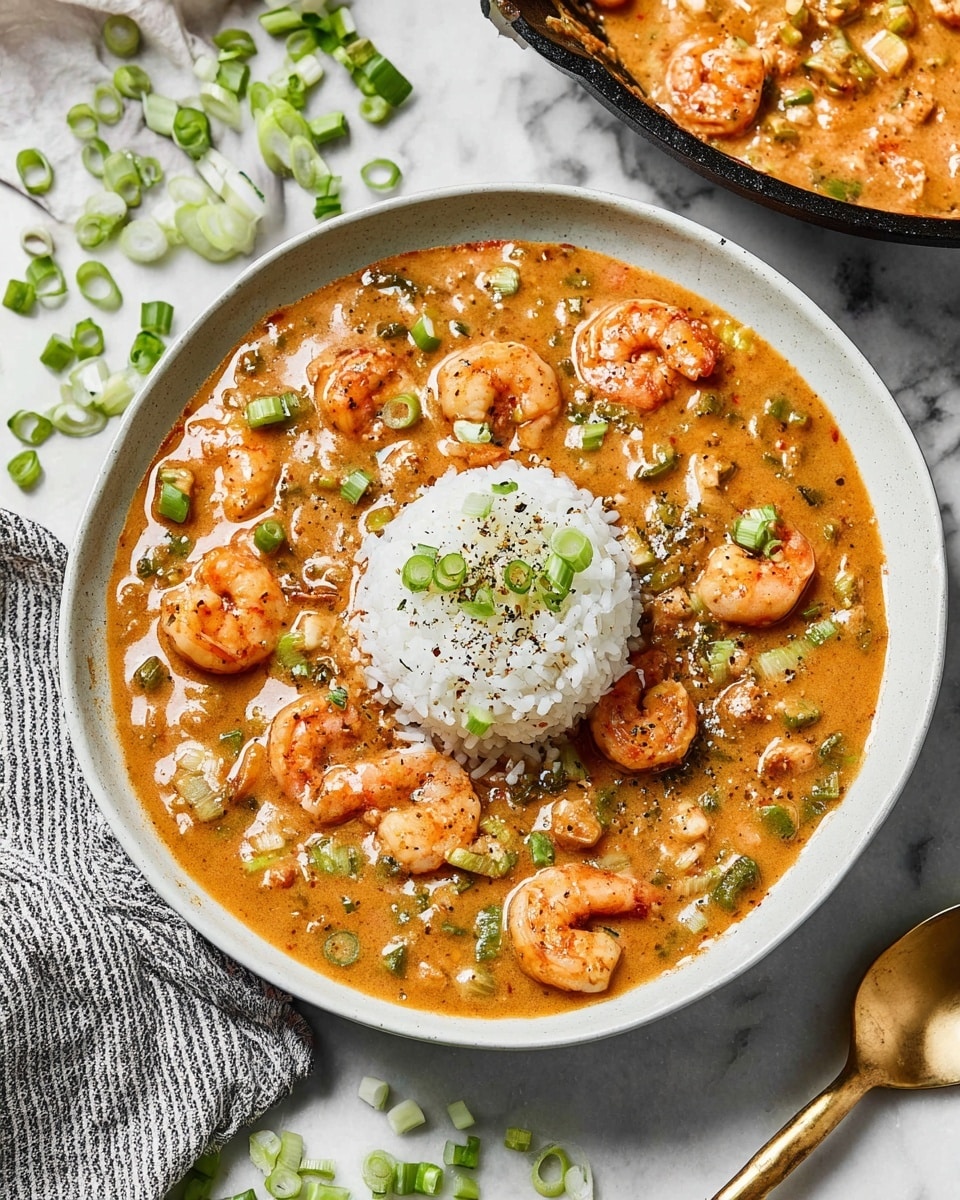
Garnishes
I always sprinkle freshly chopped green onions on top for a pop of color and subtle onion flavor that balances the richness. A little extra cayenne or a drizzle of Crystal hot sauce really wakes up the dish—it’s my family’s favorite way to add a smart kick. If you want to get fancy, a squeeze of fresh lemon juice right before serving brightens all the flavors beautifully.
Side Dishes
This étouffée shines best alongside classic Southern staples. My go-to sides include fluffy white rice or creamy stone-ground grits — the sauce soaks in perfectly. Sometimes I make a simple green salad with a light vinaigrette or steamed green beans on the side to add something fresh and crisp to the meal.
Creative Ways to Present
For special occasions, I like serving this Crawfish Étouffée Recipe in mini cast iron skillets for individual portions—it feels fancy but casual. Another fun idea is layering it over cheesy grits in shallow bowls and topping with crisp bacon bits for an extra indulgent touch. The presentation always sparks a “wow” from guests!
Make Ahead and Storage
Storing Leftovers
When I have leftovers, I let the étouffée cool completely, then transfer it to an airtight container and refrigerate for up to 3 days. The sauce thickens as it chills, but it reheats beautifully if you add a splash of broth or water to loosen it up again.
Freezing
I’ve frozen étouffée a few times with good results. Use freezer-safe containers or heavy-duty bags, label them, and freeze for up to 2 months. When thawing, do it overnight in the fridge for best texture retention.
Reheating
To reheat, I warm the étouffée gently in a saucepan over low heat, stirring often and adding broth or water as needed until it becomes silky again. Microwave works in a pinch, but slow stovetop reheating keeps the texture and flavor spot-on.
FAQs
-
Can I use frozen crawfish tails for this Crawfish Étouffée Recipe?
Absolutely! Frozen crawfish tails work well—just thaw them completely before adding to your sauce, and warm gently since they’re already cooked. This helps prevent overcooking and keeps the tails tender.
-
What is the “holy trinity” in this recipe?
The “holy trinity” refers to the combination of diced onions, celery, and green bell pepper, which forms the flavor base of many Cajun and Creole dishes, including this Crawfish Étouffée Recipe. These veggies create that classic, savory depth.
-
How spicy is Crawfish Étouffée?
This recipe has a gentle to moderate heat level, thanks to cayenne and Cajun seasoning. You can adjust the spice easily by adding more or less cayenne pepper and serving hot sauce on the side for those who want extra kick.
-
Can I make this recipe ahead of time?
Yes! You can prepare the étouffée a day ahead and refrigerate. Reheat slowly on the stove, adding broth as needed. Just be sure to add the crawfish close to the end so they stay tender.
-
What should I serve with Crawfish Étouffée?
Traditionally, this dish is served over steamed white rice, but creamy grits are a delicious alternative. A simple green salad or steamed vegetables work well to balance the meal.
Final Thoughts
I absolutely love how this Crawfish Étouffée Recipe turns out every time — it’s the kind of dish that makes you feel cozy inside and impresses even guests who’ve never tried Cajun food before. When I first made it, I struggled with getting the roux right, but once I nailed that step, it became a total game-changer. Whether you’re cooking for family, friends, or just a comforting solo dinner, this recipe has you covered. I hope you give it a try and fall in love with it just like I did!
Print
Crawfish Étouffée Recipe
- Prep Time: 15 minutes
- Cook Time: 40 minutes
- Total Time: 55 minutes
- Yield: 7 servings
- Category: Main Course
- Method: Stovetop
- Cuisine: Cajun
Description
This Crawfish Étouffée is a classic Louisiana dish featuring tender crawfish tails simmered in a rich, buttery roux-based sauce with the traditional ‘Holy Trinity’ of vegetables. Served over hot cooked rice or grits, this comforting and flavorful stew is perfect for a hearty meal with a Cajun kick.
Ingredients
Vegetables and Aromatics
- 1 yellow onion, diced
- 1 green bell pepper, diced
- 2 ribs celery, diced
- 5 cloves garlic, minced
- 1 bunch green onions, chopped (for garnish)
Roux and Sauce
- 12 tablespoons butter, divided
- 1/2 cup all-purpose flour
- 4 cups seafood stock (or a little more as needed)
- 2 teaspoons Better than Bouillon lobster base
- 1 teaspoon Cajun seasoning
- 1/4 teaspoon kosher salt
- 1/2 teaspoon freshly ground black pepper
- 1/4 teaspoon dried thyme
- 1/4 teaspoon cayenne pepper, ground (or more to taste)
Main Protein
- 1 lb Louisiana Crawfish Tails
Serving
- 4 cups hot cooked rice or grits
- Hot sauce (such as Crystal), for serving
Instructions
- Sauté “Holy Trinity” Veggies: Heat 3-4 tablespoons of butter or oil in a 12” cast iron skillet or Dutch oven over medium heat. Once melted, add diced onion, celery, bell pepper, and minced garlic. Cook for about 5 minutes until the vegetables are translucent. Remove the veggies to a bowl and set aside.
- Make the Roux: Reduce heat to medium-low and add remaining 8 tablespoons (1 stick) butter to the pan. Once melted, whisk in the flour until fully combined. Cook the roux, whisking continuously, for 10 to 15 minutes until it turns a golden color similar to peanut butter. Be careful to avoid burning.
- Finish the Gravy: Lower heat to low. Slowly add the seafood stock in a steady stream while whisking constantly to keep the mixture smooth. Add the sautéed vegetables back into the pot along with the lobster base, Cajun seasoning, kosher salt, black pepper, thyme, and cayenne pepper. Simmer on low heat for 10 minutes to achieve the consistency of a thick gravy. If the sauce is too thin, mix 1-2 tablespoons of flour with a ladle of broth in a separate cup and stir until smooth, then add back to the pot and continue cooking until thickened.
- Add Crawfish: Stir in the cooked crawfish tails and warm through gently. Taste and adjust seasonings if necessary.
- Serve: Spoon the étouffée over hot cooked white rice or grits. Garnish with chopped green onions and offer hot sauce on the side for extra heat.
Notes
- This recipe is my take on the Louisiana classic étouffée, featuring fresh crawfish simmered in a flavorful, buttery sauce.
- The traditional “Holy Trinity” of onion, bell pepper, and celery forms the aromatic base of the dish.
- Adjust cayenne pepper and hot sauce to your preferred level of spiciness.
- Seafood stock can be substituted with chicken stock or vegetable stock if preferred, but seafood stock adds more authentic flavor.
- The roux is critical—cook it low and slow for the best color and nuttiness without burning.
- Serve over rice or creamy grits depending on your preference.
Nutrition
- Serving Size: 1 serving
- Calories: 370 kcal
- Sugar: 2 g
- Sodium: 837 mg
- Fat: 21 g
- Saturated Fat: 13 g
- Unsaturated Fat: 6 g
- Trans Fat: 1 g
- Carbohydrates: 37 g
- Fiber: 2 g
- Protein: 8 g
- Cholesterol: 62 mg

